Public Administration IAS Mains Question Paper 2021:
There are Eight questions divided into Two Sections. Candidate has to attempt Five questions in all. Questions no. 1 and 5 are compulsory and out of the remaining, any Three are to be attempted choosing at least One question from each section.
| Public Administration IAS Mains Question Paper- I |
Section- A:
1:- Answer the following in about 150 words each: (10 x 5 = 50)
(a) “Governance is about managing self-organizing networks.” Elaborate.
(b) “Two-dimensional taxonomy was used by Herbert Simon to describe the degree to which decisions are programmed or non-programmed.” Explain.
(c) Examine the approach of public service motivation as an inducement to bring the desired level of efficiency in public service delivery.
(d) In theory, the ‘civil society organizations’ promote cooperation between people and public service organizations, but in practice, their activities restrict the promotion of government programmes. Analyze.
(e) Fayol and Taylor had different management perspectives, while having similar goal of organizational efficiency. Comment.
2:- (a) Behavioural approach has been questioned on the basis of its utility in the analysis of administrative problems. Discuss the weaknesses of the approach and the shifts made therein. (20)
(b) Public administration has been viewed as a socially embedded process of collective relationship, dialogue and action. Examine the statement in light of the consensus achieved in the Third Minnowbrook Conference. (15)
(c) Public-private partnership phenomenon has been transformed into a type of governance scheme or mechanism. Discuss its capacity to overcome future challenges. (15)
3:- (a) Integration of different streams of administrative thought to propound a universal administrative theory is hindered by the impact of culture. Critically examine. (20)
(b) Judicial review, prevention of misuse or abuse of administrative power and provision of suitable remedies are the basic principles of administrative law. Justify as how various organs of the State are able to uphold these principles. (15)
(c) Regulation is an old but increasingly necessary mode of social coordination and political intervention into societal processes. Examine it in the context of globalization. (15)
4:- (a) The new public service model approaches governance on the premises of an active and involved citizenship, wherein the role of public officials is to facilitate opportunities for citizens’ engagement in governance. Explain. (20)
(b) Neo-Weberian State involves changing the model of operation of administrative structures into a model focussed on meeting citizens’ needs. Discuss. (15)
(c) Nothing in public administration is more important, interesting or mysterious than leadership. Analyze the statement in the context of strategic leadership. (15)
Section- B:
5:- Answer the following in about 150 words each: (10 x 5 = 50)
(a) The approach to the study of administration in its environmental context is especially more useful for developing countries. Comment.
(b) Gender equality and women’s rights have laid down a strong foundation of development. Elaborate.
(c) Performance appraisal needs to be seen beyond the mere suitability of the official for vertical promotion. Explain.
(d) It is widely agreed that the government ought to provide the goods that market fails to provide or does not provide efficiently. Argue.
(e) MIS has evolved and gone far beyond its traditional advantages due to technological advancements. Comment.
6:- (a) Emphasis on cost control and reducing public expenditure has diverted the focus of government budgets from the basic objectives of reallocation of resources, bringing economic stability and promoting social equity. Examine. (20)
(b) In modern context, Riggsian terms have not altogether disappeared, but have emerged in different forms with newer meanings. Discuss. (15)
(c) A striking feature of economic development is an apparent symbiotic evolution of strong States and strong market economies. Analyze. (15)
7:- (a) Policy problems are increasingly tending towards being wicked. Discuss the capacity and preparedness of the State to tackle such problems. (20)
(b) Zero-based budgeting was intended to get away from incrementalism, but ended up being the most incremental of any budgetary approach. Discuss. (15)
(c) ICT has immense potential to transform governance and empower citizens. Examine. (15)
8:- (a) The successful attainment of SDGs objectives largely depends upon the wisdom, experience and farsightedness of the actors involved and their willingness to cooperate in the implementation process. Analyze. (20)
(b) Groups work to elevate issues on the policy agenda or seek to deny other groups the opportunity to place issues. In this background, discuss the role of interest groups in agenda setting in the developing countries. (15)
(c) Civil servants generally tend to exhibit the values and ethical framework of the political executives under whom they function. Explain. (15)
| Public Administration IAS Mains Question Paper- II |
Section- A:
1:- Answer the following in about 150 words each: (10 x 5 = 50)
(a) The Preamble to the Constitution of India provides a foundational framework of ideals and values for the Indian administration. Discuss.
(b) Examine the extent to which the ideal of Constitutionalism as ‘government by limited powers’ has been a functional reality in India.
(c) Red-tapism is a major obstacle to the implementation of ‘good governance’. Comment.
(d) The role and status of the Speaker in parliamentary system have their foundation in the Speaker’s stance on neutrality. Comment.
(e) The Union government develops and practices strategies to administer increasing number of existing local government services by sidelining local initiatives and discretion. Examine.
2:- (a) Kautilya envisages protection, welfare and prosperity of the State and its people as the utmost concern of a ruler. In this context, discuss the significance of Kautilya’s emphasis on governing, accountability and justice in contemporary India. (20)
(b) Distict Collector is the most important functionary in district administration in India. In light of the above statement, discuss the multidimensional responsibilities of District Collector in effecting coordinated developmental administration in India. (20)
(c) The role of the Governor is of a sagacious counsellor, mediator and arbitrator rather than that of an active politician. In this context, examine the role of the Governor in state politics in India. (10)
3:- (a) Recruitment is the cornerstone of the whole public personnel structure and it revolves around the problem of attracting the best. Discuss the essential elements of a good recruitment system. (20)
(b) Traditionally structured administrative systems have outlived their utility. Discuss as how administrative reforms can revamp, restructure and redesign the existing governmental structure to meet the new challenges faced by the Indian administrative set-up. (20)
(c) The government policy of large scale privatization of the key sectors of economy may affect India’s economic health. Comment. (10)
4:- (a) As a constitutionally mandated body the Finance Commission stands at the centre of fiscal federalism. Evaluate the role of Finance Commission in ensuring just and equitable resource sharing among the states and the union. (20)
(b) Recent market approaches to public services present serious challenges to traditional and state-sponsored public service values. Evaluate the statement in the context of Indian administration. (20)
(c) The increasing criminalization of politics is a major threat to the basic fabric of Indian democracy. Comment. (10)
Section- B:
5:- Answer the following in about 150 words each: (10 x 5 = 50)
(a) No rural development strategy can succeed unless it is complemented by appropriate Panchayati Raj Institutions. Examine the statement.
(b) NITI Aayog has been constituted to implement the goal of co-operative federalism. Discuss.
(c) Responsibility and accountability are two major goals of Good Governance. Discuss the statement in the context of Indian administration.
(d) The Prime Minister’s office has become a powerful institution in itself by virtue of its role in decision-making on strategic issues of utmost importance. Examine the statement.
(e) Well planned and goal oriented training programmes are the backbone of the civil service system in India. Examine the statement.
6:- (a) Budget proposals in the Parliament / State Legislatures fail to ensure their effective scrutiny. Identify the factors which constrain effective scrutiny of the budget proposals. (20)
(b) 73rd and 74th Constitutional Amendment Acts aimed at making the third tier of government more powerful and effective for democratic decentralization. Critically examine the extent to which this goal has been transformed into reality. (20)
(c) National Human Rights Commission is handicapped by its jurisdictional limitations of not being able to investigate the cases of violation of human rights by the armed forces. Discuss. (10)
7:- (a) Contemporary urbanism advocates the integration of diverse modes of urban planning and management concerns. Discuss the above statement in light of urban development in India. (20)
(b) Rural development programmes are designed to facilitate multifaceted growth of rural poor. Evaluate the role of some key rural development programmes in India in this context. (20)
(c) Police-public relations in India need to be imporved. Suggest measures to strengthen relations between police and public. (10)
8:- (a) In past two decades India’s public policy on Disaster Management has shifted its focus from rescue, relief and rehabilitation efforts to holistic management of disaster. Analyse. (20)
(b) The institutional legacy of ‘well-entrenched state’ affected the post-reforms promises in India. Explain the statement in the light of economic reforms in India. (20)
(c) Do you agree with the view that the civil service in India is losing its neutral and anonymous character? Argue your case. (10)
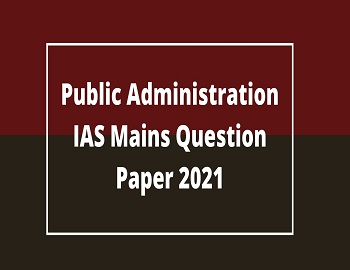
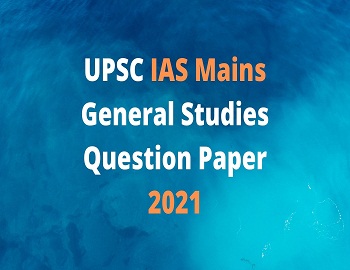


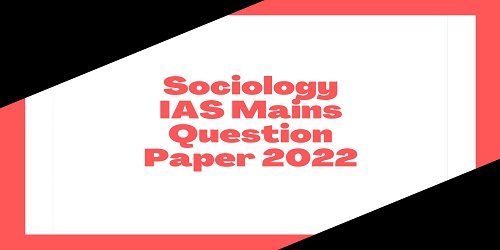
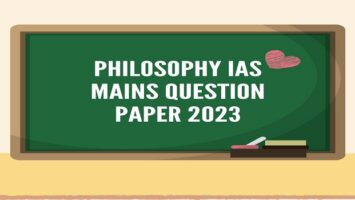
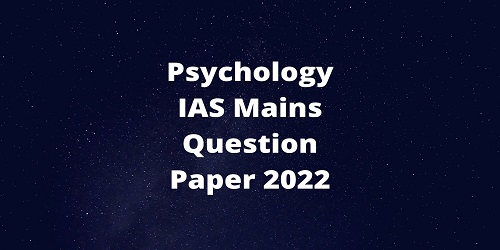
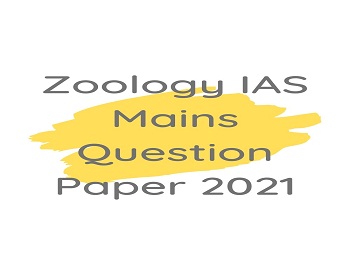
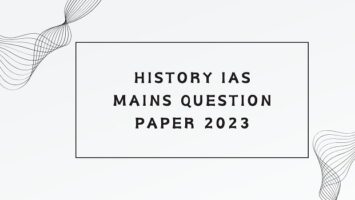
Comments (No)